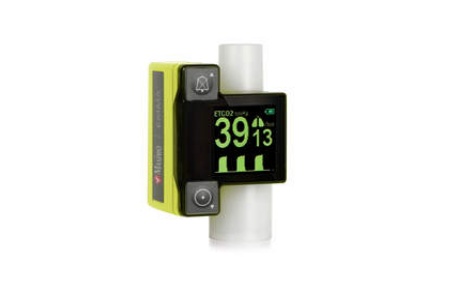

Ventilation results from pressure oscillations generated by a loudspeaker membrane at 3–15 Hz superimposed upon the set mean proximal airway pressure. The respiratory system is brought to its mean lung volume by this pressure, enabling oxygenation. This valve is inflated to a preset pressure, leading to maintenance of a stable mean proximal airway pressure. This flow passes through the patient circuit and leaves the circuit via a balloon valve. The 3100-A HFOV (3100A, CareFusion Respiratory, Yorba Linda, USA) ventilator used generates a mean airway pressure by a continuous fresh gas flow, with a maximum of 40 L min −1 (Fig. We postulated that (a) this device could be valuable for detecting relative changes of 25 % in tracheal CO 2, (b) measurements were reproducible and (c) variation in ventilator settings would not be a source of significant measurement error. The purpose of the present study was to assess the precision of the device, and its susceptibility to errors from changing ventilator settings. This device could potentially aid clinicians at the bedside targeting optimisation of ventilator settings during HFOV. We used a standard mainstream capnograph (Capnostat 5, Philips Respironics, Wallingford, CT, USA) for measurement of CO 2 concentrations during HFOV. Formulated differently, an increase in exhaled CO 2 can be indicative of increased clearance of CO 2 and hence of improving compliance of the respiratory system, and as such might be of value during HFOV, as it is in conventional mechanical ventilation. At the same time, it would be highly informative if clinicians would be able to titrate ventilator settings based on exhaled CO 2 concentrations, since it reflects the compliance of the lung at a given ventilator setting and might reflect under inflation of the lung as well as its overdistension, since both will lead to a decreased diffusion of CO 2 towards the airways and its reduced evacuation. The combination of high continuous flow and small tidal volumes yield very low concentrations of CO 2 in the exhaled gasses. When the respiratory system is inflated to the point where its compliance is highest, tidal volume and ventilation will be maximal along with CO 2 clearance. Furthermore, a continuous flow of fresh gas, or bias flow, is used to maintain a stable relatively high airway pressure. In this mode of ventilation however tidal volumes are extremely small, and ventilatory frequency is high (5–15 Hz). In patients with failing conventional ventilatory therapy, alternative ventilatory modes such as high-frequency oscillatory ventilation (HFOV) may be of benefit. With the partial pressure of CO 2 in exhaled gas (P etCO 2) as well as in arterial blood (PaCO 2) known, the gradient is indicative of the effectivity and mismatching of ventilation. During conventional mechanical ventilation, this technique has become a standard and valuable method of monitoring. This exhaled CO 2 can be measured in the exhaled gasses using capnography. The role of ventilation is removal of carbon dioxide (CO 2) from the lungs and hence the body. Mechanical ventilation is a mainstay of intensive care, its primary functions being oxygenation and ventilation. The system may prove to be of clinical value, but further in vivo measurements are warranted. Changes in CO 2 production or output can be detected. From this bench test, we conclude it is feasible to measure P etCO 2 using a main stream capnograph during high frequency oscillatory conditions, these measurements were stable during the experiment. Measurements remained stable despite humidification, heat, pressure amplitudes or mean airway pressure changes. Varying ventilator settings influenced the measurements, but the results for P etCO 2 remained within a range of 1.5 mmHg above or under then mean measurement value. A linear relationship between CO 2 flow rate and P etCO 2 was found. Influence of oxygen content, pressures, heat and moisture were recorded.

A commercially available capnograph was mounted into a high frequency oscillatory ventilator patient circuit, adjustable CO 2 flow was introduced into an artificial lung and the output of the CO 2 sensor assessed under varying ventilator settings.

To assess the feasibility, stability and predictability of pCO 2 measurement (P etCO 2) using a main stream capnograph in a high frequency oscillatory ventilation circuit.


 0 kommentar(er)
0 kommentar(er)
